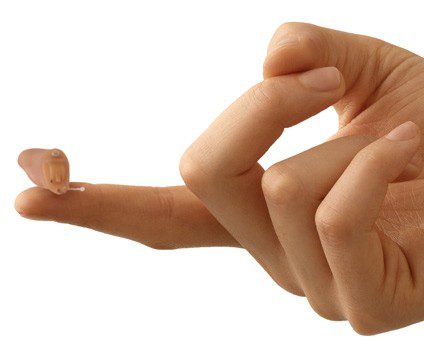Better Hearing Blog

How Hearing Loss Disrupts Relationships
When people delay treatment for hearing loss or elect not to wear a hearing instrument that might help them hear better, their decisions have consequences that extend beyond themselves. For instance, those who come in regular contact with individuals who have untreated hearing loss can become quite frustrated with being asked to repeat themselves. Others find themselves arguing about TV and radio volume. According to a recent review of 78 studies, researchers found that family members report arguments that leave them feeling stressed, worn out, and guilty (if they let their frustration show) over disagreements they have had with other family members with untreated hearing loss. This is one more reason to have hearing loss diagnosed and treated properly.
At BETTER HEARING CENTER, we know that any type of hearing impairment can have serious consequences that deserves professional care from a certified clinical audiologist. A hearing loss makes it more difficult to meet people and enjoy social gatherings. It can also affect a person’s job. A hearing loss can act as a barrier between the impaired and other people. That’s why Helen Keller said her hearing loss was a greater problem than her blindness. Is a hearing impairment diminishing the enjoyment of your life? Perhaps it’s time for a hearing evaluation. Most insurances are accepted for hearing evaluations. We are New Hampshire’s premier hearing care provider.
P.S. When untreated hearing loss disrupts relationships at work, performance and efficiency may be compromised

What’s your type?
For those with mild to moderate hearing loss, “completely-in-the-canal” (CIC) hearing instruments are a cosmetically appealing choice due to their diminutive size, but they may be too small to accommodate certain features. However, the traditional “behind-the-ear” (BTE) hearing instruments, which fit behind the ear and use a tube and earmold to direct the sound into the ear canal, can address all degrees of hearing loss and are easy to use. Hearingimpaired individuals who want to combine the best elements of both a CIC instrument and a BTE one may want to consider “open-fit” BTEs, which are smaller versions of BTEs that use a slim tube to connect to a dome that funnels sound into the ear canal.
At BETTER HEARING CENTER, our primary responsibility is matching each patient with the hearing instrument best suited to his or her individual circumstances. We then use sophisticated technology to achieve the most accurate, comfortable, custom fit. The extensive training required of certified clinical audiologists and our experience in the field make us well-suited to both tasks. Is your hearing in need of a boost? Call New Hampshire’s premier hearing care provider to arrange a hearing evaluation and to see the astonishing hearing instruments available today. Hearing tests are painless—have one soon at the only hearing center that has served the Concord, New Hampshire, area for more than 55 years.
P.S. “Receiver-in-the-canal” (RIC) and “receiver-in-the-ear” (RITE) are essentially two versions of open-fit hearing instruments, which now comprise a majority share of the consumer market

Damaging Workplace Noise
Not only does noise in the workplace have the potential to damage workers’ hearing, but there is evidence that workplace noise may also raise blood pressure and cholesterol levels among workers exposed to elevated noise levels. This is an important finding because hypertension and high cholesterol are listed as top risk factors for heart disease. With this in mind, workers in mining, construction, and manufacturing should be particularly diligent about having their hearing checked. Beyond that, workers found to exhibit signs of hearing loss should not only take preventive measures to reduce their exposure and treat their hearing loss, but they might also want to schedule an appointment with their physicians to assess their heart health.
Safeguarding your hearing is vital no matter what your occupation or recreational pursuits. Protect your hearing from hazards of all kinds—carry soft foam ear plugs with you for when you find yourself in a situation in which the noise level is unpleasant, even hazardous to your health. And turn to the skilled experience of a clinical audiologist at BETTER HEARING CENTER for a thorough hearing examination and complete hearing healthcare services. We offer comprehensive, individualized evaluations, treatment, and management of hearing disorders.
P.S. Long-term exposure to noise levels at 80-85 decibels or over can cause hearing loss. Heavy city traffic is 85 dB.

Wind Noise Reduction is a Breeze
While sailors may delight in the prospect of taking to the ocean on a windy day, those wearing hearing instruments often find that the wind poses a challenge to hearing that must be overcome. According to one survey, hearing-instrument users listed wind noise as their “second worst listening situation.” This problem results from the creation of turbulence as wind moves past the instrument’s microphone. In response to this adverse listening condition, today’s digital instruments are outfitted with “Wind Noise Attenuation Systems” that automatically detect wind noise and try to suppress it. Tested in wind tunnels, these systems work to improve the perception of vowels and consonants to a degree that users are easily able to comprehend conversation in windy conditions.
Just as trifocals were designed to correct vision for different activities like reading and driving, some hearing instruments are designed to correct hearing in various social situations. Put the many available products for the hearing impaired to good work for you. At BETTER HEARING CENTER, we’ll help you choose from among the variety of designs of hearing instruments to find the one that best suits your needs. Start by calling for an appointment for a comprehensive hearing test at New Hampshire’s premier hearing care provider.
P.S. Current wind noise reduction systems can cope with unpredictable changes in wind direction and force by analyzing data 500 times per second.
Hearing Loss in Both Ears
In most cases, hearing loss occurs in both ears at roughly the same rate. This means that people who visit the hearing instrument specialist with the expectation that they will need only one instrument may need to adjust their thinking. Patients with “bilateral” (two ear) hearing loss who attempt to correct the problem with only one hearing instrument are usually in for a difficult experience. Wearing only one hearing instrument can change a symmetric hearing loss into an asymmetric one and make it difficult for the brain to process sound. This is particularly so in challenging situations, such as noise-filled environments. Wearing a hearing instrument in each ear makes it easier to locate sound and understand conversation.
Discovering and acknowledging there is a hearing problem is the first step toward correcting it. The next step is turning to a clinical audiologist for comprehensive examination, evaluation, and determination of the best approach to the impairment. Are you thinking there might be a problem with your hearing? Would you like to learn more about today’s advanced technology in hearing instruments? We can help you address these issues and others here at BETTER HEARING CENTER, New Hampshire’s premier hearing care provider.
P.S. Bilateral hearing loss can be either “symmetrical” (hearing loss is about the same in both ears) or “asymmetrical” (hearing in one ear is better than in the other ear).

Sharper Hearing, Sharper Mind
In an effort to examine the link between a form of age-related hearing loss (involving the inner ear and **hearing nerves) and the risk of developing mild cognitive impairment (MCI), researchers examined 1,604 people with an *average age of 75 years. (MCI is a type of cognitive decline that is noticeable, but not sufficiently significant to *interfere with daily activities.) The study’s participants underwent a series of hearing tests and had both their memory and reasoning tested. The researchers found that those with hearing loss were twice as likely to develop MCI *compared with people whose hearing was intact. While the study doesn’t prove that hearing loss leads to memory loss, it does demonstrate a link between the two.
Don’t let a hearing impairment keep you on the outside looking in. Help is available in many forms, but all begin with a comprehensive hearing evaluation by a clinical audiologist. We carry state-of-the-art testing equipment and a full range of today’s innovative hearing aids designed to bring back the sounds of life to the hearing impaired. And our staff is second to none when it comes to providing first-rate, compassionate, personalized services. Call us to **schedule a hearing test at BETTER HEARING CENTER, the only hearing center that has served the Concord, New Hampshire area for more than 55 years.
P.S. A third of seniors worldwide have a disabling form of hearing loss.
